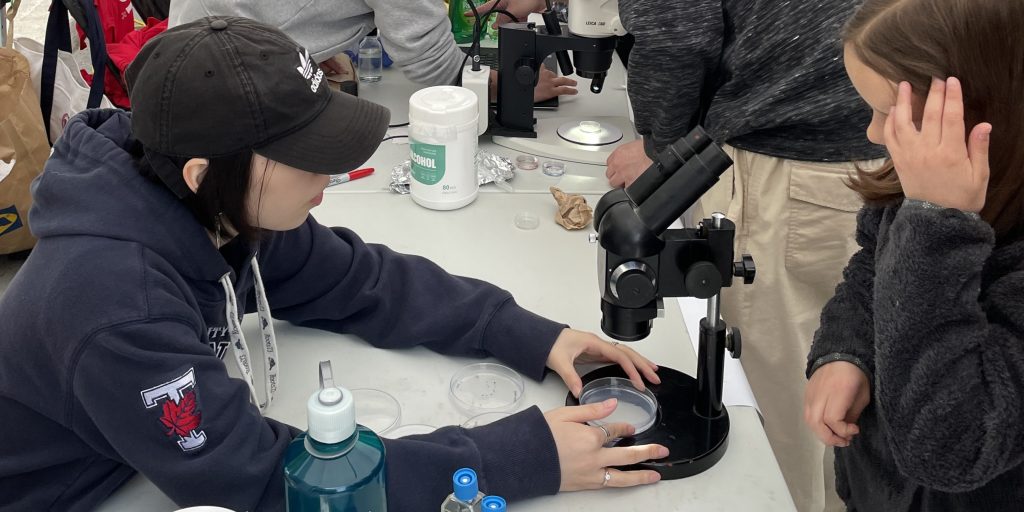The Science Rendezvous open air festival provided CSB staff and students a chance to bring our science outside to share with the general public. Even as the sunny skies turned to rain, we stuck to our tents on St George Street and chatted with our visitors.

Kenana al Kakouni and Daniel Gaim showed the wonders that can be seen in a drop of water. Visitors lined up to look under the microscope at slides of Daphnia, C. elegans and other tiny animals.
Kenana explained how tiny organisms are used for teaching in our undergraduate labs and Daniel demonstrated low-cost microscopes that give extraordinary detail of small samples.
Arthur Siu, Ryan Huang and Josheen Kour revealed two-headed flatworms to our visitors, and talked about the regenerative powers of flatworms that allow them to regrow a full body from a morsel of tail.
Scientists can test the signals that promote regeneration by disrupting the process, and two-headed worms are just one result that comes from a deepening understanding of regeneration.
Neil Macpherson showed the differences between plant and animal cells by displaying models of cells and the organelles that make up the cell. He explained how chloroplast organelles make leaves green, and delved into the details of how information is stored in the nucleus.
Our younger visitors made soft models of an intriguing organelle or used their imagination to make new organelles. Mitochondria and chloroplasts were a favourite, once visitors learned that chloroplasts make sugar, and that mitochondria give people energy by breaking down sugar.
Iris Low was able to show what happens when mutant plant seedlings have no chloroplasts. After a burst of growth from the nutrients stored in the seed, her white seedlings arrested their growth while the green seedlings thrived. There were long queues at the microscope to look at these tiny mutants.

Mariia Cherednychenko demonstrated two ways plants can be used in at-home science experiments. She showed that red cabbage leaf juice can change colour based on whether you add acidic lime juice or basic baking soda. Our visitors were excited to squish bananas in plastic bags, and Mariia guided them to add special solutions to make clouds of banana DNA in the bag.
We were glad to meet hundreds of visitors, demonstrate our exhibits and talk with them about our shared enthusiasm for discovery!
